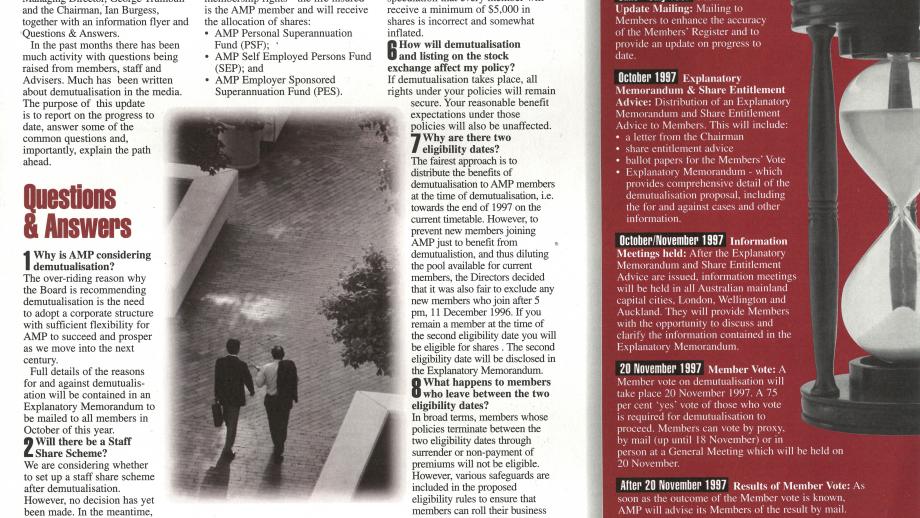AMP Limited
For the first time in its history, in 1993 the AMP Board led by chairman Ian Burgess recruited a managing director from outside the Society, and in June 1994 American George Trumbull was appointed managing director and chief executive officer. By this time AMP had 19,000 staff across Australia, New Zealand, Great Britain, and Asia.
AMP’s direction for the 1990s was to offer the best customer service, increase profits, gain more value from its investment in technology, attract new people with new skills at every level, and provide more training and incentives for its current workforce. The Society also chose a new slogan – AMP Works For Me.
Trumbull made significant changes to the business, including ceasing some of the operations of London Life and revitalising Pearl by appointing new chief executive officer Richard Surface. At this time AMP also ended its partnership with Westpac, selling AMPAC Life back to Westpac for $343 million. In 1996 AMP sold its Hong Kong business, followed by a partial sale of its business in Indonesia in 1997, although an AMP Office was opened in Beijing. AMP also took over the London-based investment business Henderson and National Provident Institution as part of a desired expansion into the British market.
By the late 1990s conditions for both AMP and the economy in general were improving. AMP, as Australia’s largest commercial property owner, benefitted greatly from a growing demand for office space. AMP was still the largest life office in Australia and New Zealand and business was expanding rapidly in Britain.
The most significant change in AMP's history was yet to come. AMP was founded in 1824 as a cooperative society, a mutual whose core objective was to help people help themselves and their families. Almost 170 years later, support for the concept of a mutual society was waning and in 1994 the AMP Board started to explore the prospect of demutualisation and listing AMP as a public company. In 1997, following the passing of a special bill in the New South Wales Parliament, AMP followed the path of two of the other large Australian life offices, National Mutual and Colonial Mutual, and commenced the conversion to a public company.
AMP announced that all policyholders would be eligible to exchange their membership for shares, and they would be free to sell shares from 1998 once the new company was listed on the stock exchanges (Blainey, 1999). The holders of larger and more valuable policies would receive the most shares in the new company, with smaller policyholders entitled to a minimum of 100 shares. Most shares would be distributed to Australians, but 24% of the company’s shares would go to those in New Zealand and Britain. Trumbull’s estimate was that one in every five Australian households would be a shareholder in AMP and the estimated value of these shares by mid-1997 was $9.4 - $11.1 billion (Blainey, 1999). A vote in November 1997 saw 98.3% of policyholders vote in favour of demutualisation and with that, AMP Limited was born.

